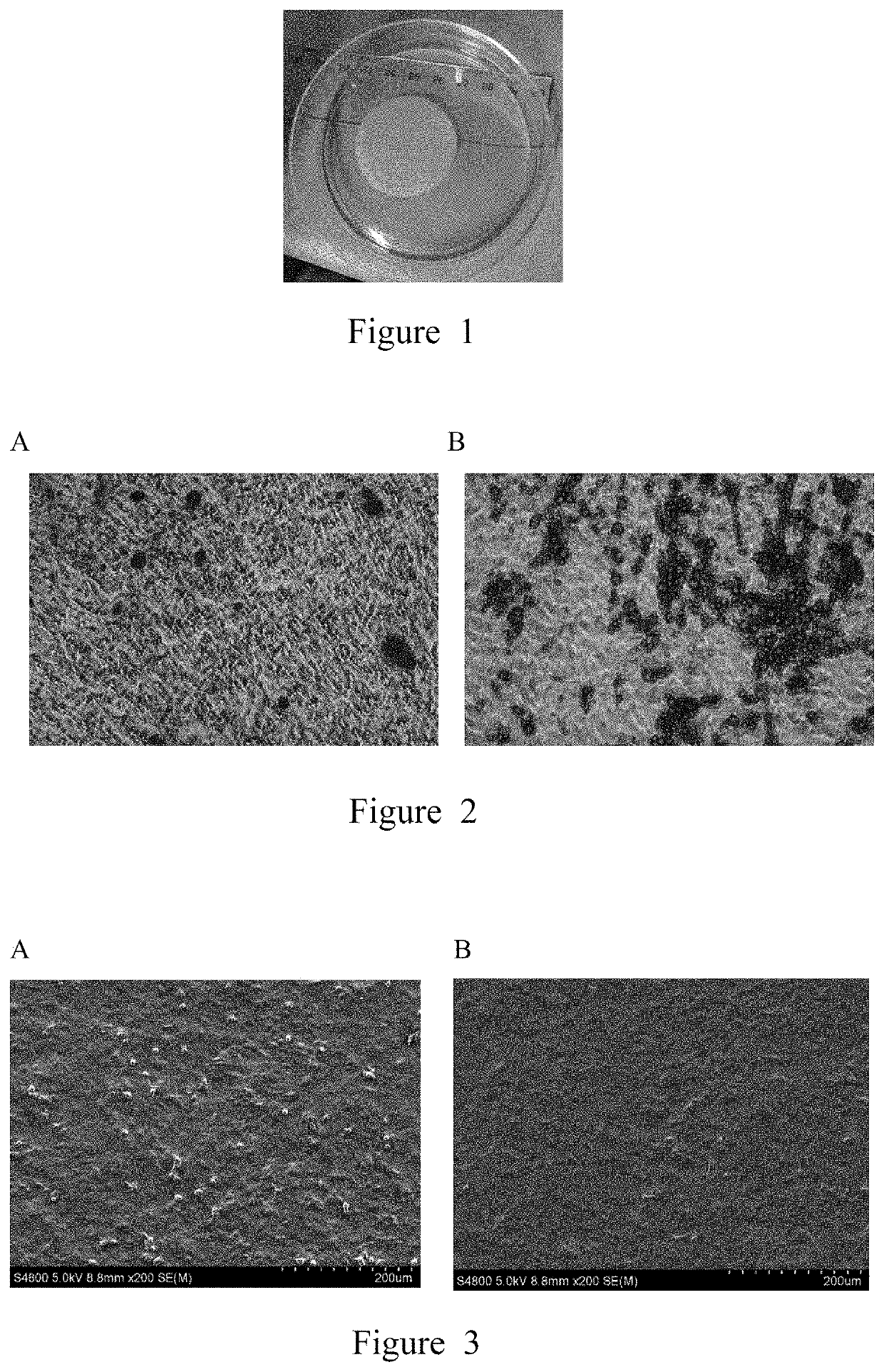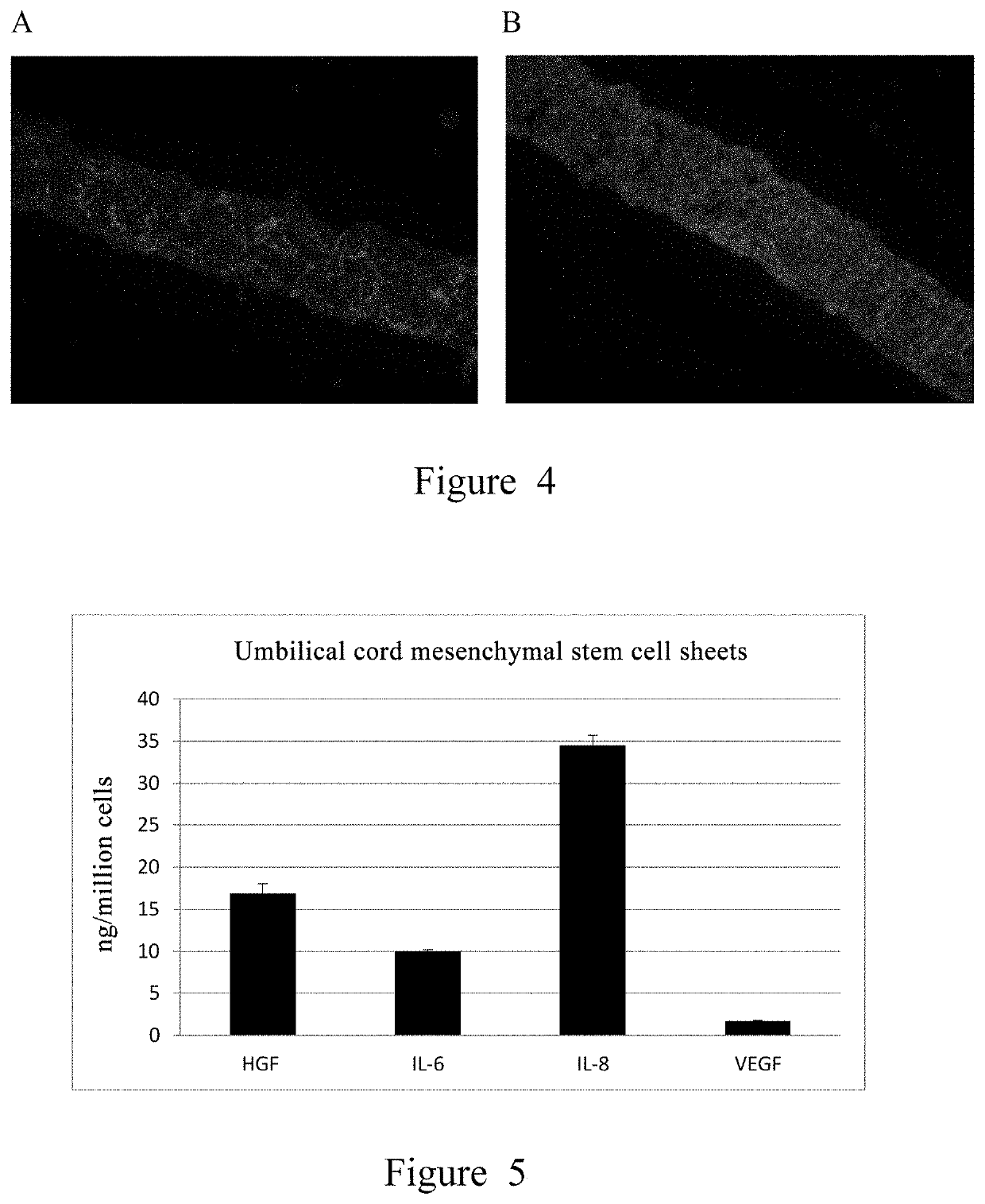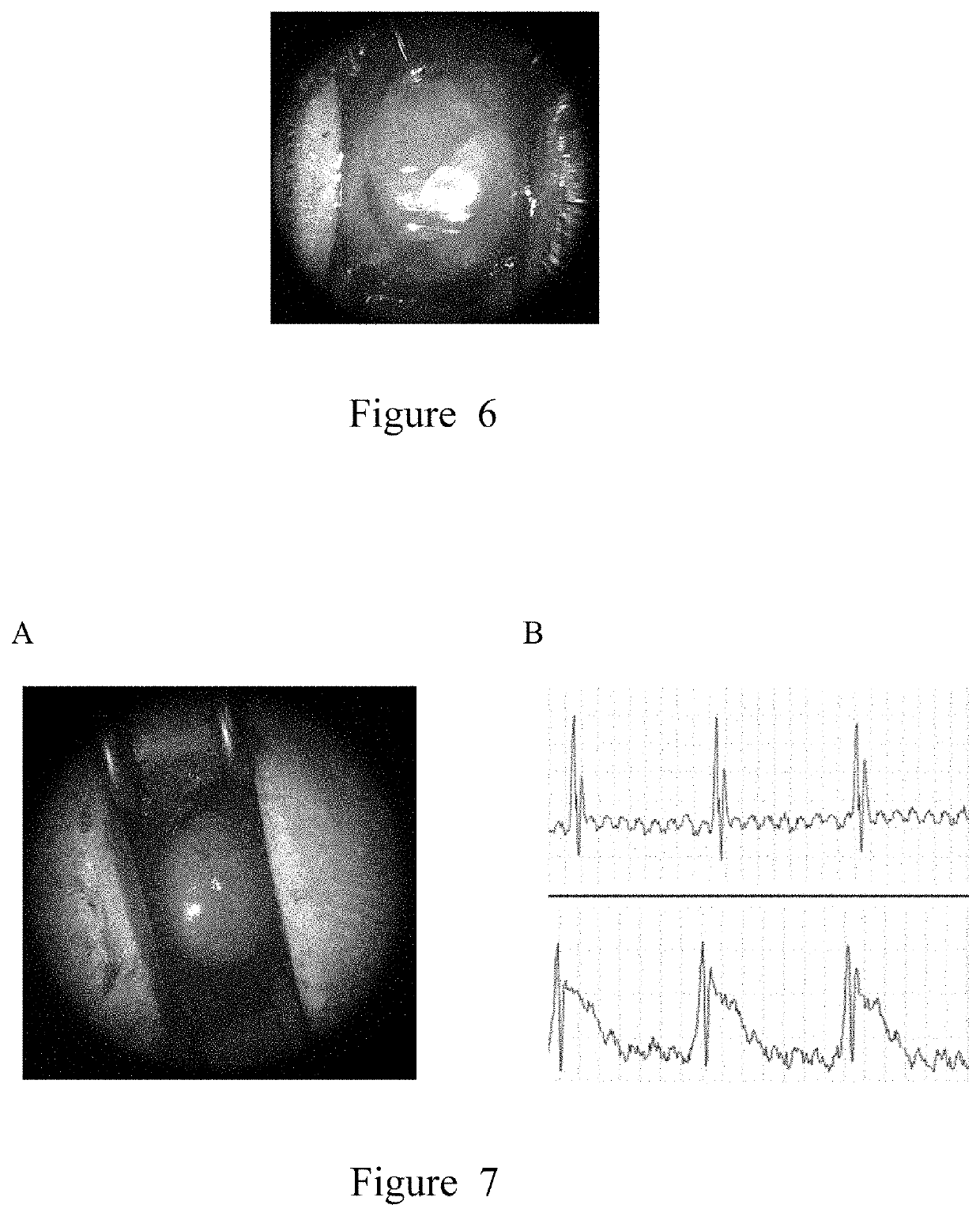Mesenchymal stem cell sheet and use thereof
- Summary
- Abstract
- Description
- Claims
- Application Information
AI Technical Summary
Benefits of technology
Problems solved by technology
Method used
Image
Examples
example 1
on of Umbilical Cord Mesenchymal Stem Cell Sheets
[0119]The umbilical cord of a human newborn is taken, and the outer membrane and blood vessels are removed to obtain the Wharton's jelly-like tissue within the umbilical cord tissue. The Wharton's jelly-like tissue is cut with a sterile scissor into tissue blocks of about 1-2 mm3, and plated in a petri dish for culture. The tissue blocks are removed after the umbilical cord mesenchymal stem cells migrate out, and fresh medium is added to continue the culture. When the cells grow to about 70-100% confluence, the cells are passaged. Under the microscope, umbilical cord mesenchymal stem cells are observed to grow adherently, appear fibrous and uniform in shape.
[0120]The isolated mesenchymal stem cells are identified by detecting the following cell surface markers via flow cytometry: CD105, CD34, CD31 and CD117, where CD105 is a positive marker; CD34, CD31 and CD117 are negative markers. The results show that CD105 is 99.64%, CD34 is 0.02...
example 2
ization of Mesenchymal Stem Cell Sheets
[0123]The structure of the prepared umbilical cord mesenchymal stem cell sheet is characterized using a scanning electron microscope and immunofluorescence imaging The cell sheet is photographed by scanning electron microscopy after preparation through steps of 2.5% glutaraldehyde fixation, alcohol gradient dehydration and air drying, etc. As shown in FIG. 3, the cell sheet has a surface not contacted with the petri dish (the upper surface, FIG. 3A) and a basal surface contacted with the petri dish (the lower surface, FIG. 3B), with differences in structure: the surface formed is relatively smooth due to the natural sedimentation of cells; the basal surface is contacted with the material of the thermo-sensitive petri dish and is relatively rough. Due to its structural characteristics, the basal surface can provide greater friction, which is beneficial to the cell sheet to be better attached to the application site.
[0124]Subsequently, the expres...
example 3
on of Fresh Mesenchymal Stem Cell Sheets for Immediate Use
[0128]The thermo-sensitive petri dish with mesenchymal stem cell sheet grown in Example 1 is removed from the cell incubator, the medium is aspirated and discarded, and 4° C. pre-chilled PBS or saline is added. After 10 minutes, the cells automatically peel off the edge of the petri dish and gradually expand to the center; if the cells fail to peel off automatically, a 10 μL pipette tip can be used to gently draw a circle along the wall of the petri dish to promote the peeling of the cells. The completely peeled mesenchymal stem cell sheet is transferred to a common petri dish, washed twice with physiological saline, added with 10 mL of fresh sheet protection solution, and aseptically sealed and packaged.
PUM
 Login to View More
Login to View More Abstract
Description
Claims
Application Information
 Login to View More
Login to View More - R&D
- Intellectual Property
- Life Sciences
- Materials
- Tech Scout
- Unparalleled Data Quality
- Higher Quality Content
- 60% Fewer Hallucinations
Browse by: Latest US Patents, China's latest patents, Technical Efficacy Thesaurus, Application Domain, Technology Topic, Popular Technical Reports.
© 2025 PatSnap. All rights reserved.Legal|Privacy policy|Modern Slavery Act Transparency Statement|Sitemap|About US| Contact US: help@patsnap.com



